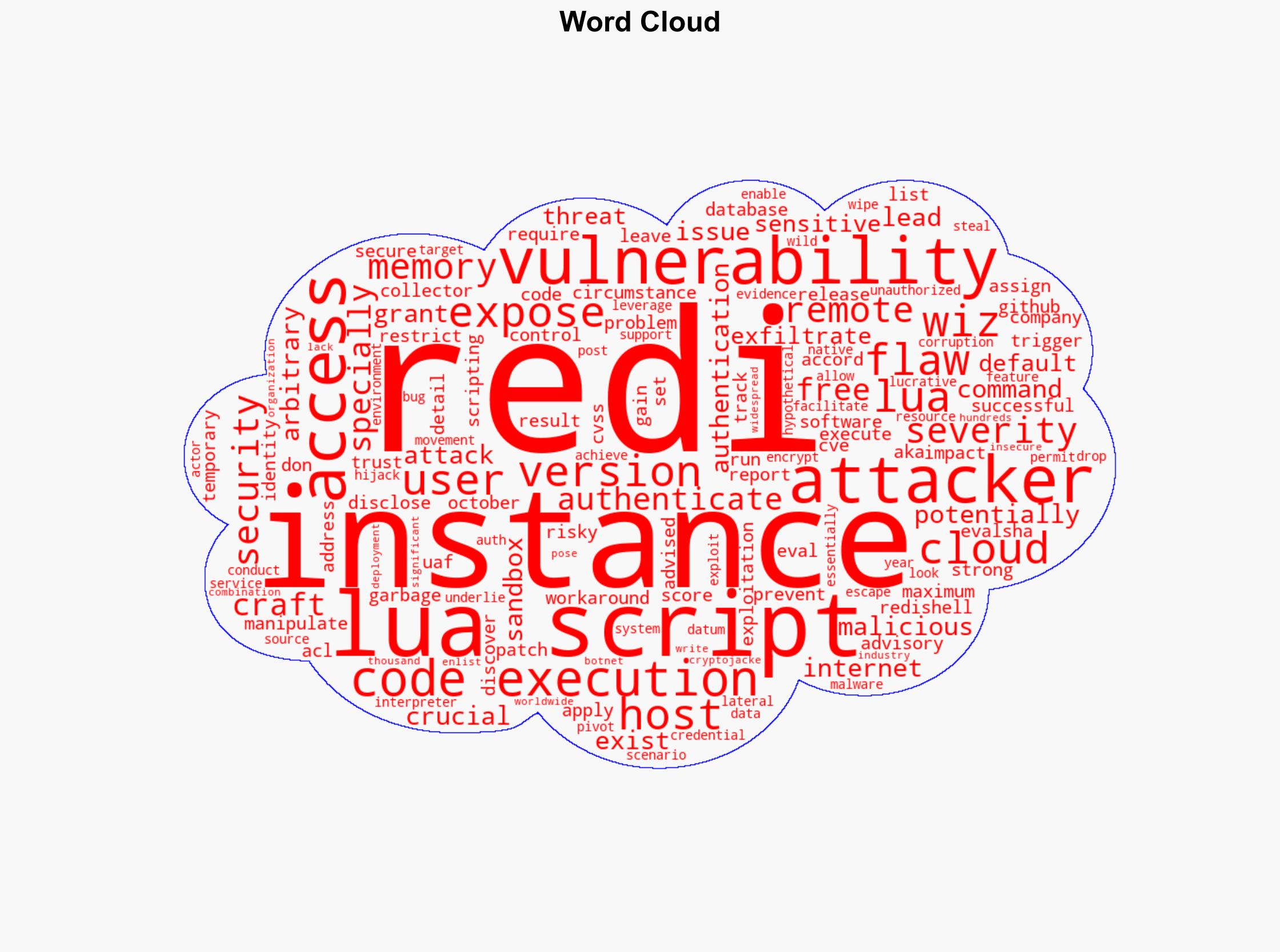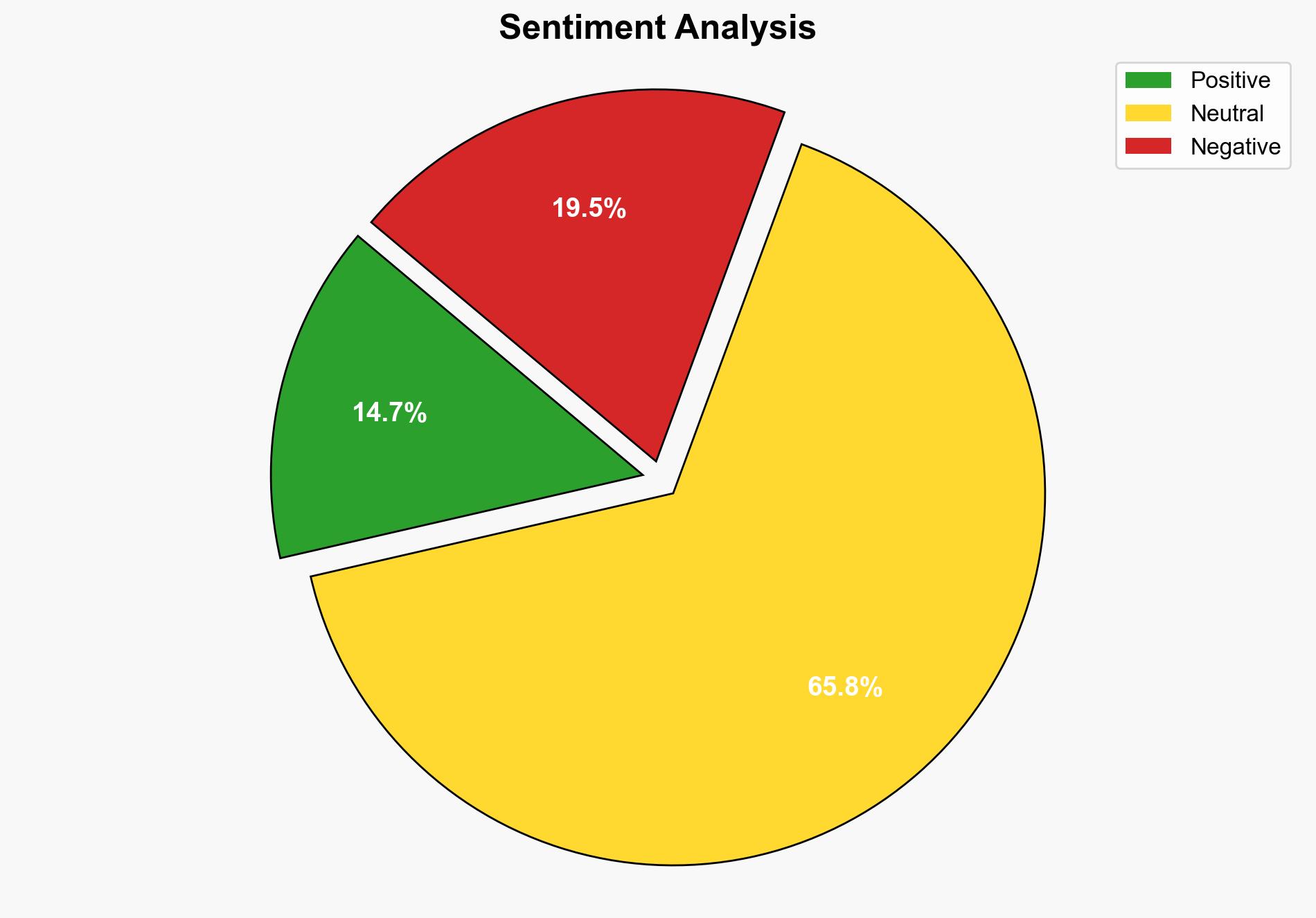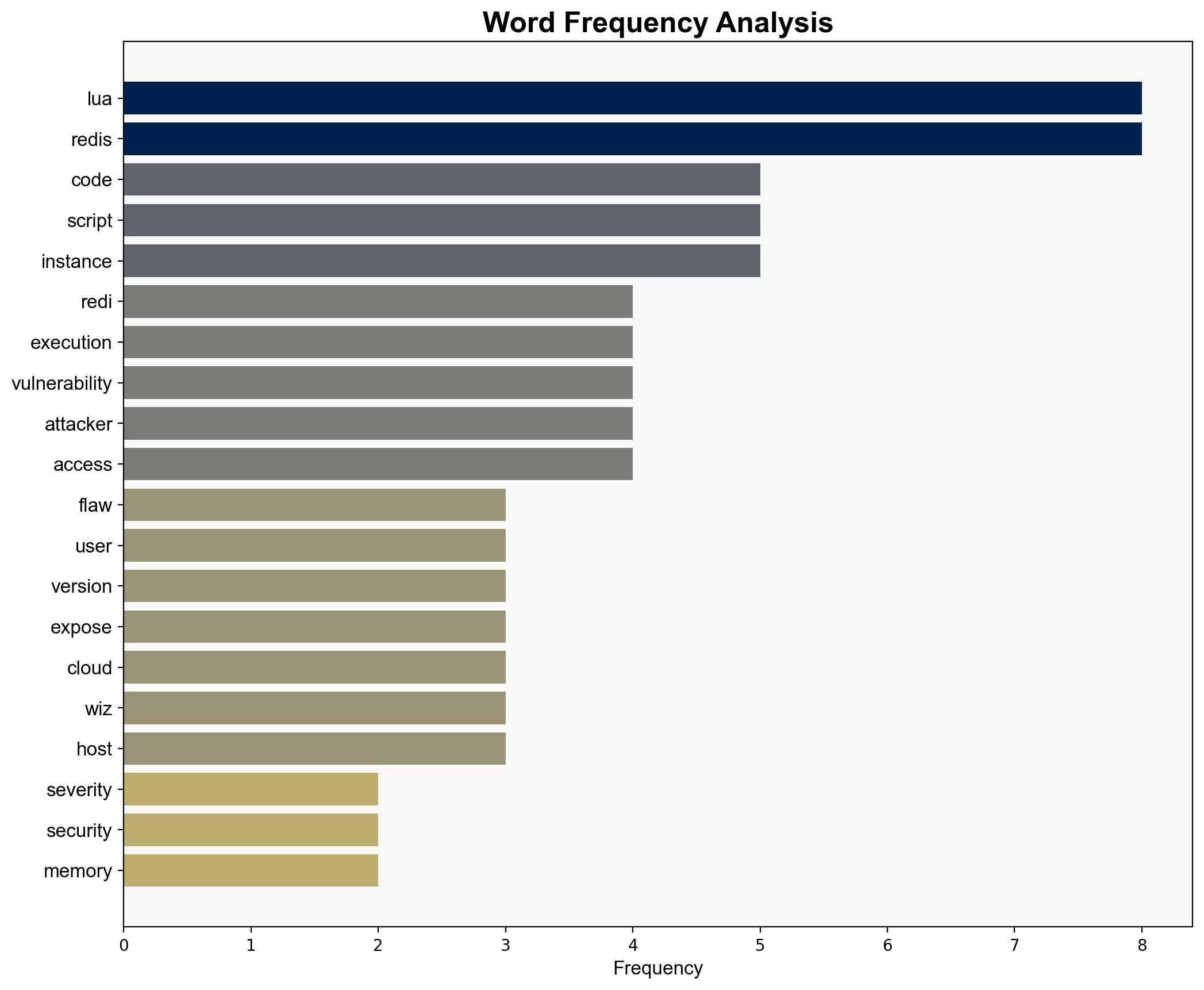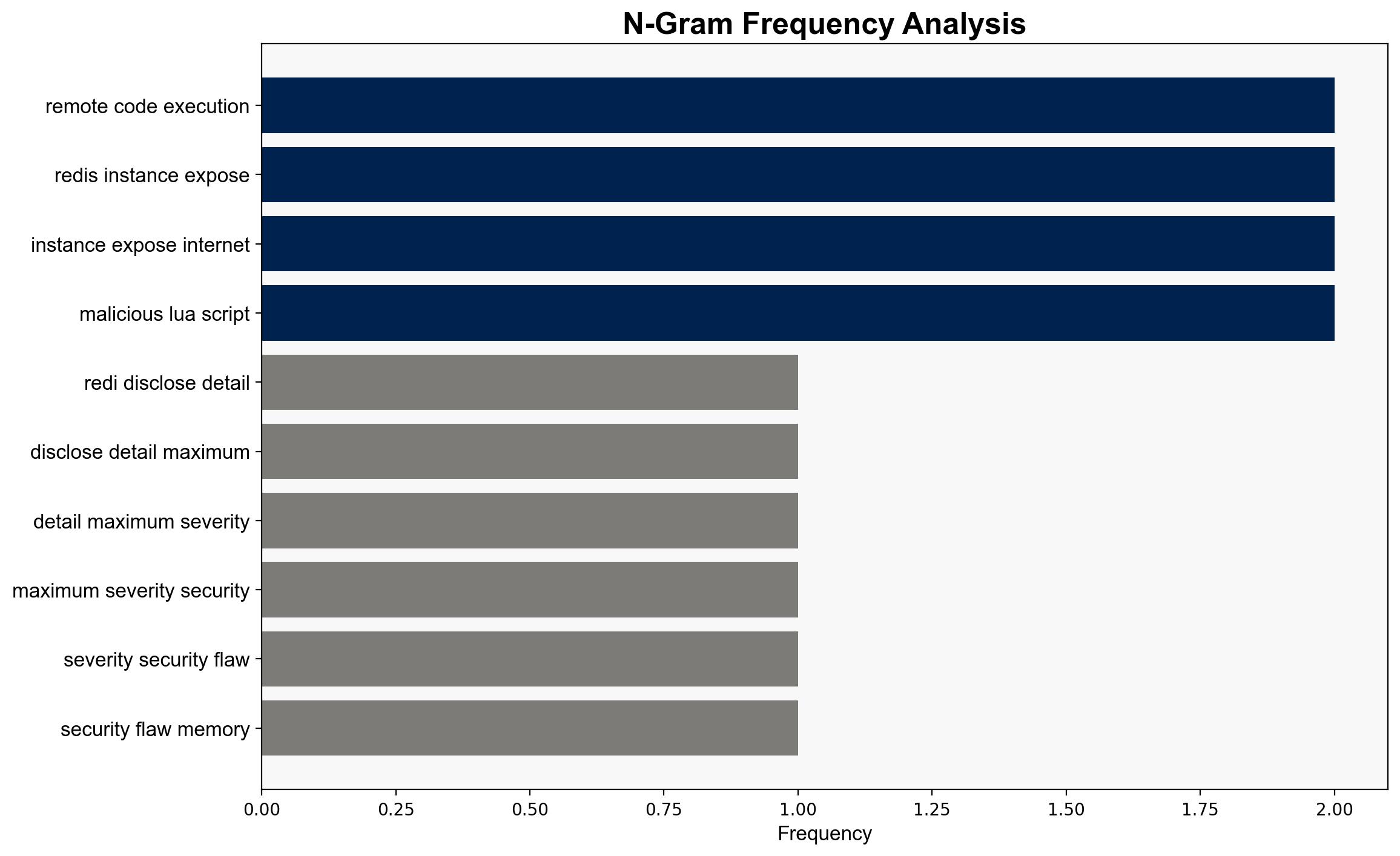13-Year Redis Flaw Exposed CVSS 100 Vulnerability Lets Attackers Run Code Remotely – Internet
Published on: 2025-10-07
Intelligence Report: 13-Year Redis Flaw Exposed CVSS 100 Vulnerability Lets Attackers Run Code Remotely – Internet
1. BLUF (Bottom Line Up Front)
The Redis vulnerability, identified as CVE-XXXX-XXXX, poses a critical threat due to its potential for remote code execution (RCE) by authenticated users. The most supported hypothesis is that this flaw could be exploited by cybercriminals for large-scale attacks, including data exfiltration and cryptojacking. Immediate patching and enhanced security protocols are recommended. Confidence level: High.
2. Competing Hypotheses
Hypothesis 1: The vulnerability will be exploited primarily by cybercriminals for financial gain through cryptojacking and data theft.
Hypothesis 2: State-sponsored actors will leverage the vulnerability for espionage and strategic disruption of critical infrastructure.
Using the Analysis of Competing Hypotheses (ACH) 2.0, Hypothesis 1 is better supported due to the widespread exposure of Redis instances and the historical precedence of cybercriminals targeting such vulnerabilities for financial motives. Hypothesis 2 is plausible but less supported due to the lack of specific indicators of state-sponsored interest at this time.
3. Key Assumptions and Red Flags
Assumptions include the belief that all exposed Redis instances are vulnerable and that attackers will prioritize financial over strategic targets. A red flag is the potential underestimation of state-sponsored interest, which could lead to a blind spot if geopolitical tensions escalate. Inconsistent data includes the lack of confirmed exploitation in the wild, which may indicate either underreporting or delayed detection.
4. Implications and Strategic Risks
The vulnerability could lead to significant economic losses through data breaches and service disruptions. If exploited by state actors, it could escalate into geopolitical tensions, particularly if critical infrastructure is targeted. The psychological impact includes potential loss of trust in cloud services and open-source software security.
5. Recommendations and Outlook
- Immediate application of patches and security updates to all Redis instances.
- Implementation of strong authentication measures and network segmentation to limit access.
- Scenario-based projections:
- Best Case: Rapid patch deployment mitigates most risks, with minimal exploitation.
- Worst Case: Widespread exploitation leads to significant data breaches and economic impact.
- Most Likely: Targeted attacks by cybercriminals with moderate financial impact.
6. Key Individuals and Entities
No specific individuals are named in the intelligence. Key entities include Redis developers, cybersecurity firm Wiz, and potentially affected organizations using Redis.
7. Thematic Tags
national security threats, cybersecurity, counter-terrorism, regional focus




